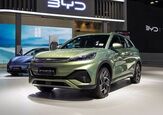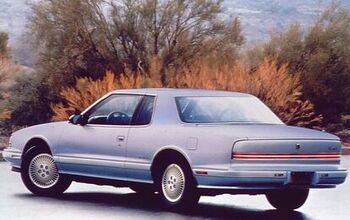Steinway and Daimler: The Grand Partnership And The Half-Million Dollar Mercedes

Steinway & Sons may be the last great American brand: from 1853 to the present day, the company has built world-class musical instruments by hand in New York. Unlike their contemporaries in the guitar-making business, Steinway never went through “bad times”, even after the family sold out in 1972. (Interestingly, although CBS bought both Fender and Steinway, the paths taken by the two companies under CBS ownership were very different.) Nor have they become mere cloacae for the diarrheal discharge of Foxconn’s suicide factories the way Hewlett-Packard, Dell, and Apple have. Steinway’s business model is simple and hasn’t changed for over a century. They build the pianos in the United States to exacting standards, charge premium prices for them, and everybody is happy.
The power of the Steinway brand is such that everybody from random auto reviewers to big-time ad agencies feels compelled to mention their products in an automotive context. Googling the Steinway name together with that of any major auto-media outlet will yield results ranging from dismal to pathetic. Engines, body panels, dashboards, radio switches, and brake feel are all likened to the company’s eight-hundred-pound musical gorillas. There’s something about Steinway that gets car guys excited.
Wait till they find out that Steinway was in the business of building automotibles before Soichiro Honda was born, and remains so, in minor fashion, to this day.
There are at least three versions of the story, depending on whom you choose to believe. One version: Wilhelm Maybach’s brother was a Steinway employee and spoke highly of the company to him. Another: Gottlieb Damiler was a member of a traveling mannerchor and saw a Steinway piano in the United States. Steinway’s official story is that, while traveling through his home country in 1888, co-founder William Steinway heard that Daimler was developing horseless carriages, visited the firm, and subsequently took a Daimler motorcycle on a very satisfactory tour of Germany.
The rest of the history is far more clear cut. In October of 1888, Steinway became a Daimler licensee, empowered to produce Daimler internal combustion engines for marine and other uses. (A brief digression: Steinway chose the name “Daimler Motor Company”. The English Daimler licensee of the same name eventually became a full-line manufacturer of automobiles designed in-house, and was acquired by Jaguar before British Leyland swallowed them both. The “Daimler Double Six” of the Eighties was a Series III XJ6 V12, and the Queen’s limousine was a Daimler DS420.) A factory in Hartford, CT built them, while the piano factory at Long Island had space to fit them to boats if required. It should be noted that this was not the only diversified entry on Steinway’s books; the company operated a motor launch and purchased considerable real estate holdings in the New York area, which increased in value considerably during the twentieth century.
When William Steinway died, the family sold control of the Daimler Motor Company to General Electric, although the facilities stayed the same. GE built small delivery trucks there as well, powered by Daimler engines. Meanwhile, the Daimler “Mercedes” 35-horsepower automobile was becoming famous throughout the world. To capitalize on that success, the Daimler Motor Company announced availability of an American-built “Mercedes” in 1905. The price was an astonishing $7500. Let’s put that in perspective; it was six times the cost of Steinway’s Model D concert grand, which today starts at $120K and goes up from there. In 1905, gold was $21 an ounce, so if you use that as a standard, the American Mercedes was worth a cool half-million or more in today’s quantitatively-eased currency.
Nobody seems to know how many of the cars were built, but the number cannot have been high by any standard. The Long Island facility burned down in 1907, and production was never restarted. This more or less ended Steinway’s excursion into the automobile, although like any other patriotic American firm they did their part in World War II by building gliders in addition to “combat pianos” meant to be air-lifted to remote bases.
I say “more or less” because the firm is still associated with German automakers in a few small ways. Some Internet sources claim that the wood trim for Maybachs is cut and finished by Steinway’s Hamburg facility. If that’s true, it represents perhaps the only justifiable reason to drive one. Less justifiable, however, is the China-market Steinway and Sons 7 Series. It’s difficult to imagine what the pitch for that car might be — “Own a car which will be obsolete junk in the same time it takes to play Chopsticks” — but presumably it’s finding buyers on that label-conscious continent. One wonders what William Steinway would have thought of the BMW Siebener, but a few moments spent seated at the keyboard of his piano will banish that concern, along with most others.

More by Jack Baruth
Latest Car Reviews
Read moreLatest Product Reviews
Read moreRecent Comments
- Paul 175k? Pffft not a chance. A VW with that mileage is an enormous bill waiting to happen.
- Turbo Is Black Magic Civic Si all the way… it’s the sweet spot of fun to drive, manual, decent MPG’s, no dealer markup BS. Especially in Canada where you can get heated seats.If you are in the US just buy the last gen Si… it’s still a vastly better car than the current one.
- FreedMike Cheap, fun car. I like it. For what it's worth, good examples of the first-gen models (based on the original Golf) have become collectible and expensive.
- Ajla I won't rank them because there are too many permutations but if I was actually shopping them odds are high I'd end up with some flavor of Corolla over some flavor of Civic.
- SCE to AUX He got sick of the commute, and the hassle of being 4 time zones away. Maybe it was mutual.


































Comments
Join the conversation
Steinway has the luxury of selling $20,000+ grand pianos so that likely explains why it was managed so differently from Fender. For the kind of money Steinway asks for it's a lot easier to keep manufacturing in the U.S. Actually, since most pianos are rather expensive, a lot of brands are still made here, though I think lately the electric models have gotten so good that people have been buying a lot more electrics when they can. Cheaper to upkeep and never goes out of tune, etc.
Keep in mind that Steinway also owns Conn-Selmer, which makes a TON of entry level musical instruments in China. Yamaha is a much, much better musical instrument brand.